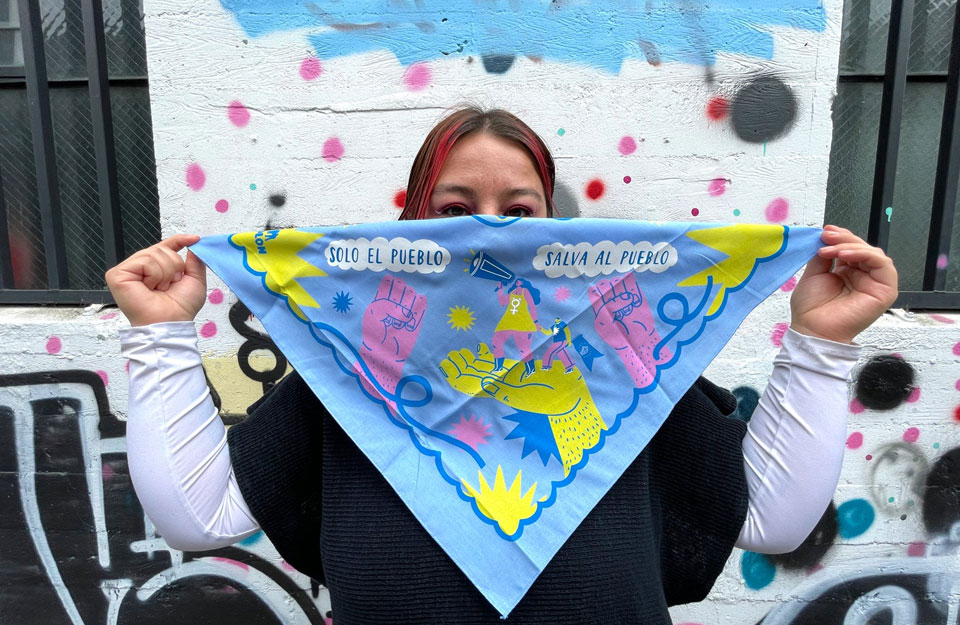
WASHINGTON —Building “a just economy” for workers will be a long-term project which may often go outside the structures and strictures of traditional unionism.
So say worker center and alternative labor leaders, all workers of color, gathered together in a zoomed forum sponsored by The American Prospect just before Labor Day.
Exploring new ways of organizing workers and increasing their power is important. The coronavirus pandemic has shown both the organized power of workers—when they unite—and what happens when they don’t.
Then, both bosses and their mostly Republican political puppets exploit the workers, including putting them in actual physical danger.
That’s what former GOP Oval Office occupant Donald Trump did to meat and poultry plant workers, most of them workers of color, when he declared them “essential,” and forced them back to work despite bosses’ refusal to protect them against community spread of the contagion.
That’s also happened when Amazon workers in Bessemer, Ala., felt unionizing would help solve their hazardous and stifling warehouse working conditions. But owner Jeff Bezos, one of the three richest people in the U.S., pumped millions of dollars and shady tactics into union-busting, and the Retail, Wholesale and Department Store Union lost the recognition vote.
That outcome left those workers, most of them Black, ripe for continued exploitation and Amazon retaliation, too. Its labor law-breaking, though, may lead to a rerun vote.
In the face of this, the worker center and alternative labor movement leaders offered alternatives to traditional campaigns.
“Some unions had abandoned day laborers and abandoned (organizing) residential construction” contractors, Pablo Alvarado of the National Day Laborers Organizing Network explained. So worker centers arose not just to organize, educate and mobilize the workers—most of them Spanish-speakers—but also to provide counseling and social services.
There’s a link: “Worker centers need to emulate those unions that kept true to union principles” by covering more than pay and benefits. Those unions “wanted to embrace us.”
Most importantly, he declared: “We have been spoken of without having a seat at the table. So we spoke up” via the centers.
Worker centers also build pride among the workers, and increase knowledge of their exploitation, added Lola Smallwood Cuevas of the National Black Workers Center in Los Angeles. The centers “create opportunity for a community trapped in a cycle of unemployment and underemployment.
“The Black workers’ story is rooted in dealing with the effects of racial capitalism,” which produced centuries of exploitation and worse, she noted. In L.A., when the group organizing the workers center first looked at capitalism’s impact, in 2008, they found Blacks were 8% of the city’s population, 45% of its homeless people and half of those L.A. jailed.
“So we could not focus on the traditional model of training” people to organize or to seek work, Cuevas explained. “So we built a new kind of labor movement that brings labor justice and racial justice together.” The result? “Stronger Black workers leads to a stronger community and a stronger community leads to a stronger L.A.”
By contrast, said Ai Jen-Poo of the National Domestic Workers Alliance, domestic workers had some history to build on, even if it wasn’t at first in the Asian-American community whom she started organizing more than a decade ago.
The history “dated back to the first working women’s strike, in Atlanta, in 1881.” That strike both raised wages and “embedded” the National Domestic Workers Union into the later civil rights movement, Jen-Poo said.
But then the domestic workers movement quieted, until the 1990s, when “it started to break out from behind closed doors to feel its power,” she elaborated. The key to the breakout, she said, was to ensure the movement was multi-racial and across state and city lines.
Organizers from six cities and 12 different groups united around a two-pronged strategy: On-the-ground organizing and bringing political weight to bear for state-level Domestic Workers Bill of Rights laws. The most recent one passed in New York.
Still, there are roadblocks, Jen-Poo admitted. Because domestic workers are “disaggregated and downgraded, and seen as ‘the help,’ we often had to use very creative tools to organize them.”
That’s where the political activism and the legislation come in, she explained. It opened the door to organizing—just as the Protect the Right to Organize Act, unions’ #1 legislative objective in Congress, would do.
But the workers’ centers didn’t neglect those unions they felt they would be sympathetic, added Sarita Gupta, a former domestic worker organizer in Chicago who now works on workers’ issues at the Ford Foundation, a co-sponsor of the session.
“I was in places where” workers center organizers “could meet and cultivate relationships, often behind the scenes.” There, she said, Jobs With Justice played a key role “as a bridge across very different cultures—of the labor movement and the worker shelter movement, of a shared analysis of global worker rights and solidarity, and then bringing (both groups) together on the picket lines.”
That’s important, added Erica Smiley, a longtime organizer and now executive director of Jobs With Justice.
The worker centers “were creating new forms of collective bargaining,” she explained, encompassing not just wages and benefits, but community conditions such as better housing and fully staffed schools. “People have created silos around collective bargaining” and those must break down, Smiley said.
Those community conditions also needed a political environment, she noted.
“Reconstruction was the last time we” as a country “were really committed to building a multiracial democracy, actualizing democracy and citizen rights,” Smiley said.
The new worker center movement and reorienting collective bargaining to wider goals—an idea pioneered not just by JWJ but, though Smiley didn’t say so, the Chicago Teachers Union—is to give workers “some control over capital” and how it is used.
“My favorite is a small seafood supplier in Louisiana” whose workers organized “to directly negotiate with Walmart” over prices the worker-hostile giant would pay for their fish and shellfish. Walmart, faced with determination–and with few other seafood sources–agreed.
“Why not negotiate all the way to set standards and enforce them?” not just in the workplace but in the wider community, “in things like building quality” for homes and apartments “and rent,” Smiley asked.
Ai Jen-Poo added politics can play a role in setting those standards, too. NDWA convinced Seattle to create a domestic workers’ standards board “to talk about what labor standards should look like.” The board just started, but is already moving towards concrete proposals, she added. “Now, we’re, with SEIU, moving towards a sector-wide strategy.”
Sometimes, that strategy involves working with cooperative employers, when they’re found, said Sekou Siby of the Restaurant Opportunities Center.
“We have a narrative shift and also a policy shift,” he explained. The “narrative shift” is “identifying the toxicity of the National Restaurant Association,” the nation’s restaurant lobby. “The other NRA” is a top foe of raising the federal minimum wage of $7.25 an hour and top advocate of maintaining the so-called “tipped wage” of $2.13 hourly. Both keep restaurant workers, most of them workers of color, poor.
The policy shift is “we can’t fight every restaurant” in the country. “So we also organize employers” to be fair “to workers. We make the case that wage increases lead to performance increases and that’s good for business,” Siby said. Restaurants who agree wind up with good publicity from ROC and via word of mouth. Workers wind up with better pay and benefits.












Comments